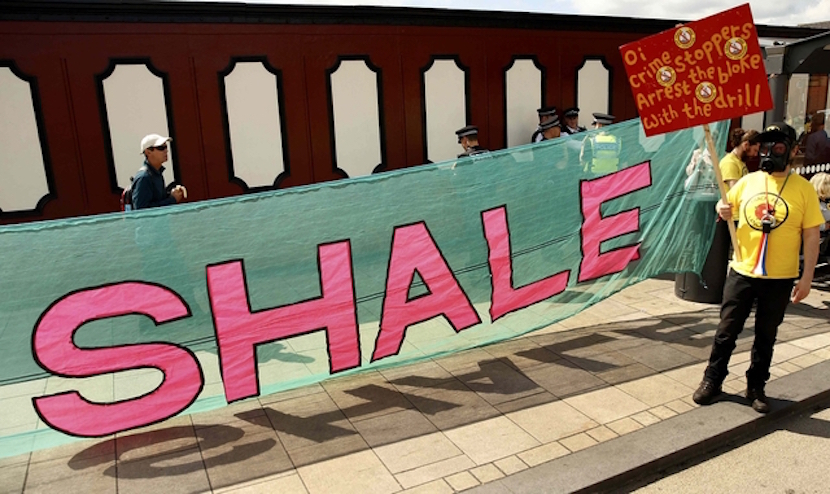
- Anti-fracking protesters demonstrate outside County Hall in Preston, Britain June 23, 2015. Lancashire County Council is debating an application by shale gas firm Cuadrilla Resources to frack on the Fylde coast, local media reported. REUTERS/Phil Noble
By Lynn Doan and Dan Murtaugh
The sudden rebound is a testament to how resilient U.S. shale has become in the battle for global market share. Spurred by last year’s collapse in prices, shale explorers have brought down their break-even costs by $15 to $20 a barrel, a Bloomberg New Energy Finance analysis shows.
“As much as anything else, the rise this week is a testament to break-evens coming down just over the course of this year,” James Williams, president of energy consultancy WTRG Economics, said by phone from London, Arkansas, on Friday. “Shale is a lot more resilient than we thought it was, and it means we’re going to be able to keep producing shale oil at a lower cost than we thought we could.”
While U.S. benchmark West Texas Intermediate oil has gained about 6.9 percent this year, it’s still down 46 percent from a year earlier. Futures for August delivery lost 20 cents to $56.73 a barrel in electronic trading on the New York Mercantile Exchange at 12:06 p.m. Singapore time on Friday.
Cheaper Services
The costs of various drilling services have fallen by 20 percent to 50 percent in the U.S., Charles Blanchard, a BNEF analyst in New York, said by phone Wednesday. The break-evens in plays including parts of Texas’s Permian Basin and Eagle Ford shale formation and the South Central Oklahoma Oil Province, known as SCOOP, are below $40 a barrel.
Producers are getting the most relief on items that are specific to the oil world, such as frack sand and rental rates on drilling rigs and pressure pumps, said Scott Mitchell, director of upstream research for Wood Mackenzie Ltd. in Houston.
U.S. oil explorers are homing in on their most productive areas and renegotiating drilling costs as they face increasing competition from the Organization of Petroleum Exporting Countries. The 12-nation group, which accounts for more than a third of the world’s crude supply, has resisted calls to curb its own output and instead pumped the most last month since August 2012, based on a Bloomberg survey.
“If you have core acreage in places like the Permian or the Eagle Ford, you can keep producing a lot,” Blanchard said.
Producers could add about 100 oil rigs by the end of the year, Mitchell said. As activity increases, the cost declines may come to an end.
“Drilling rigs and fracking require a quite specific technical workforce, and there were a lot of layoffs as a result of the drop in activity,” Mitchell said by phone. “We may find the supply of people becomes short very quickly if activity ramps up, leading to price increases again.”


